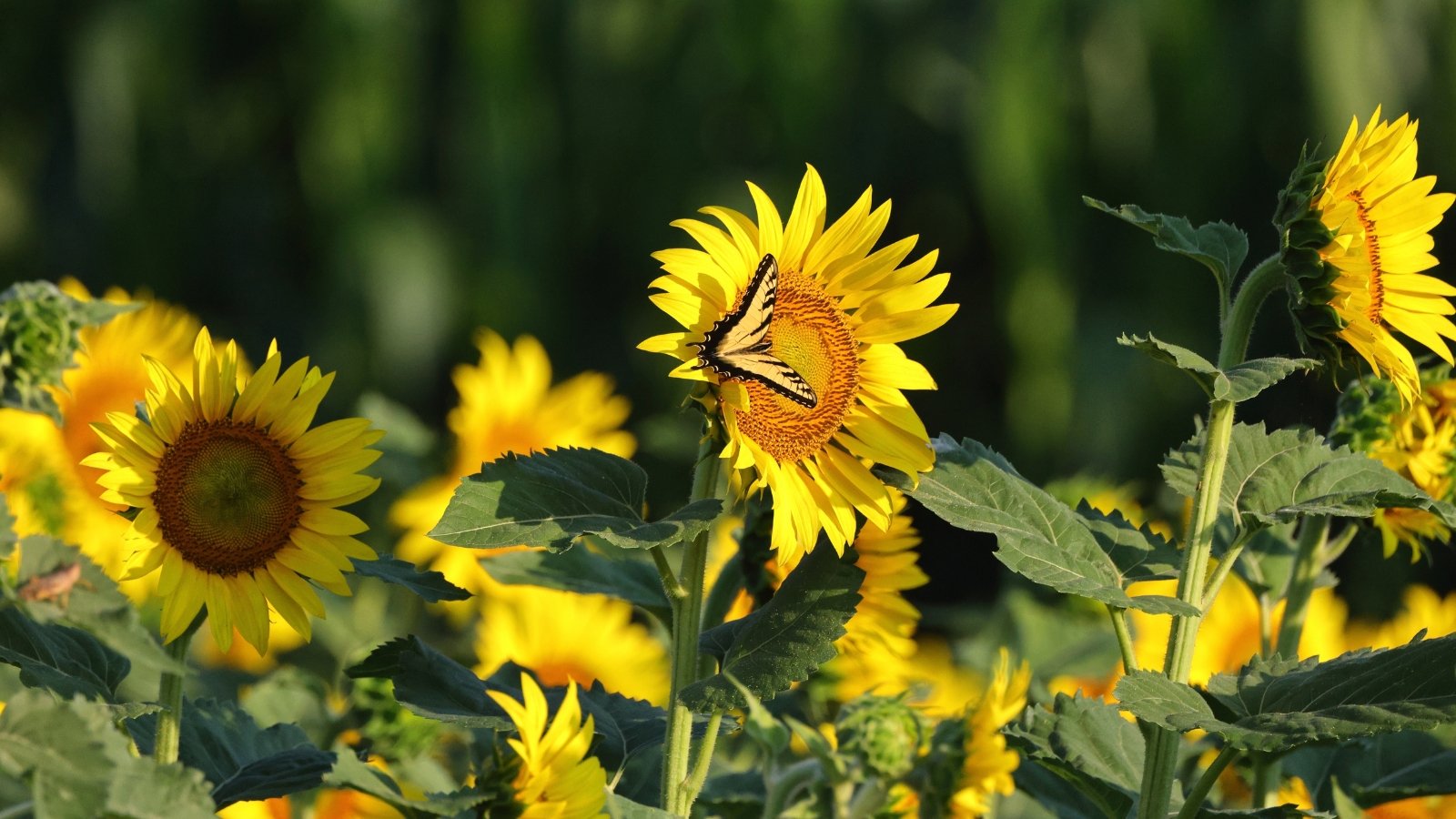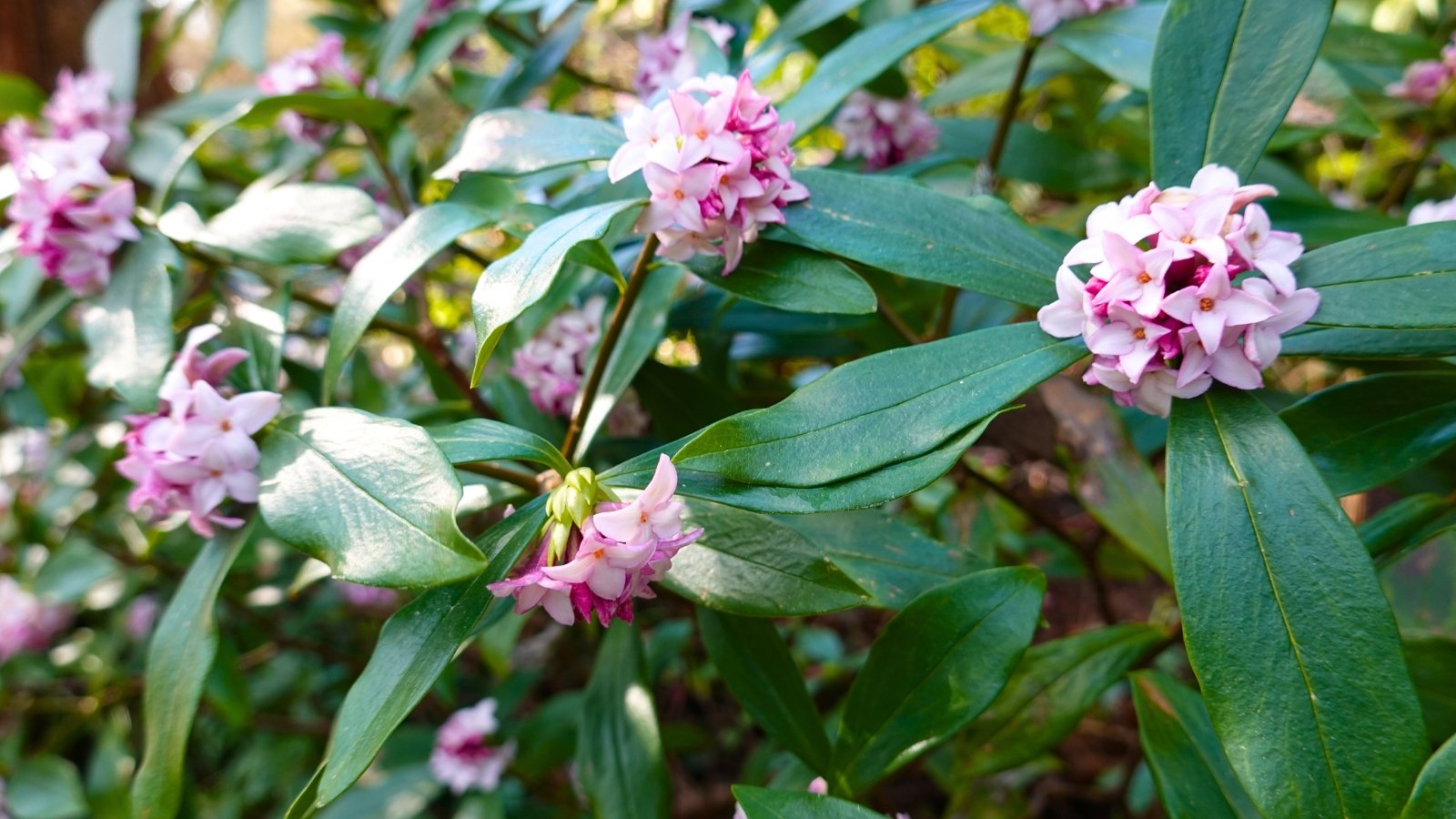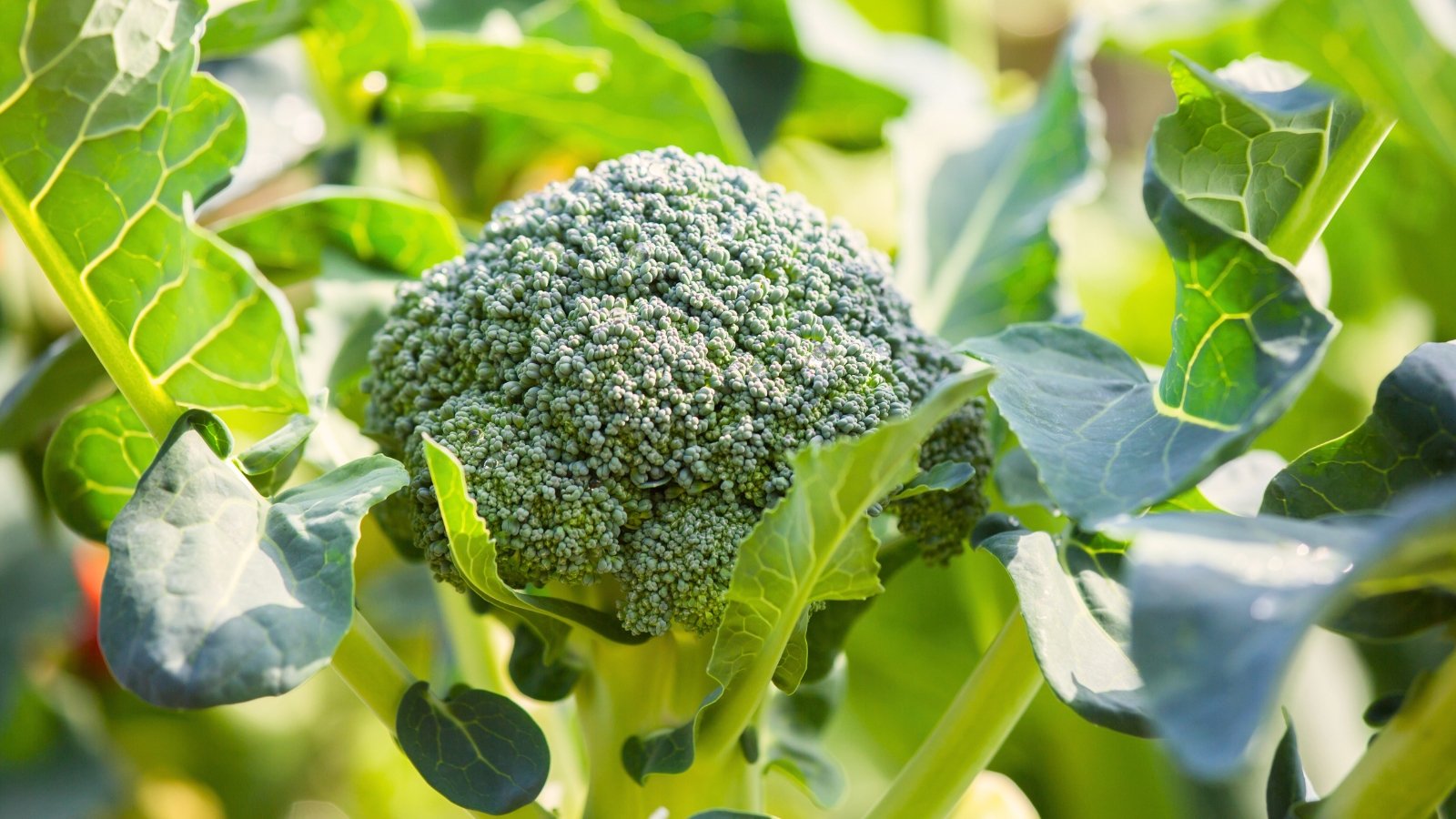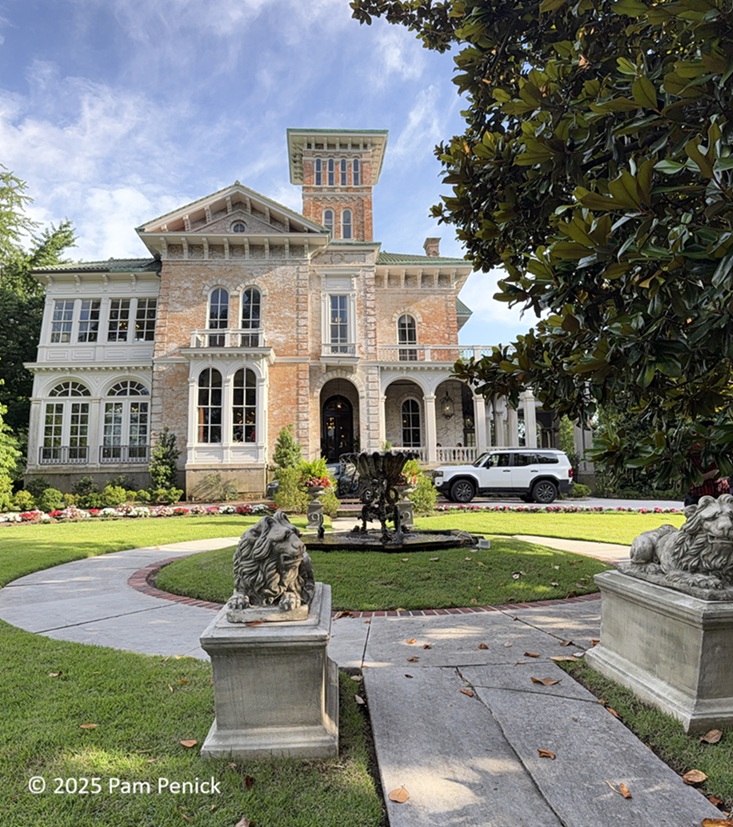PROTECT YOUR DNA WITH QUANTUM TECHNOLOGY
Orgo-Life the new way to the future Advertising by AdpathwayShrubs in pots and containers anchor the landscape with multiseason appeal, and all the better when they’re low-maintenance, requiring very few extra resources to thrive. Whether featuring them as specimens or in mixed arrangements, shrubs are dynamic container additions.
Pots allow us to showcase selections for their colorful blooms, fragrance, form, and foliage. They attract pollinators or steady the display with evergreen leaves. You may start with a small shrub and transplant it to the landscape as it outgrows its pot, or plan more long-term with dwarf varieties and large vessels to support root development and mature size.
Low-maintenance shrubs in pots have lots of merits, including little tending. They need only minor pruning, if any, and don’t require deadheading or regular fertilizer applications. With the container in the right spot for ideal sun exposure and with moisture to meet their optimal growing requirements, easy-care potted shrubs bring big returns throughout the seasons.
Container Culture
 Refresh potting mix every few years for happy roots.
Refresh potting mix every few years for happy roots.For the best foundation, start with a large pot with good drainage and a high-quality potting mix. Even low-maintenance and dwarf shrubs need plenty of room to accommodate mature roots and upper growth; large pots (18” diameter and bigger) accommodate more growth, retain moisture longer, and overwinter better than small ones. A larger pot means less frequent watering and less maintenance.
Still, watering is a constant, especially in the summer, as containers dry out faster than in-ground plantings. Terra cotta and porous materials allow aeration and drain quickly, which promotes healthy roots. They also dry out faster than other materials and may crack in freezing temperatures. Insulate the pots or shelter plants for winter protection in cold climates.
A high-quality, well-draining potting mix formulated for containers is a sterile mix, loose and airy, with nutrients to foster growth and retain moisture. Avoid “garden soil” labels or digging native soils from the landscape, which can be too dense for potted situations.
Topdress with compost each spring to improve drainage and boost nutrition. Depending on the selection’s organic preferences, apply a slow-release granular fertilizer at the start of the growing season. Every few years or so, consider a refresh on potting mix, which degrades over time.
Hydrangea
 It keeps blooming all summer if the watering stays consistent.
It keeps blooming all summer if the watering stays consistent.Hydrangeas bring big, blooming color even in containers. Whether a long-blooming selection or a repeat performer, they bring lasting summer interest as featured specimens. Numerous dwarf selections bring a variety of colors and floral structures and are ideal as low-maintenance shrubs in pots. Situate them according to their shade preferences, which is often partial shade with protection from afternoon sun. The biggest need they’ll have is regular moisture.
‘Invincibelle Wee White®’ (Hydrangea arborescens ‘NCHA5’) is the first dwarf smooth hydrangea and a perfect fit for small spaces and pots at just over two feet tall. The low-growing variety has recurrent flowers on strong stems, emerging whitish-pink and maturing to white. ‘Wee White®’ received the Direct Gardening Association’s Green Thumb award for its strong landscape performance and novelty.
‘Tiny Tuff Stuff™’ (H. serrata ‘MAKD’) is a mountain hydrangea and a jewel box of color. It produces a profusion of lacecaps in pastel purples and blue to pink to white, depending on soil pH. The delicate flowers have double petals that age to pink. ‘Tiny Tuff Stuff™’ is reliably winter hardy with good bud set and reaches up to two feet.
And for a standout bigleaf type (H. macrophylla), ‘Pop Star®’ brings bold color on a petite form. The dwarf hybrid grows only a few feet tall and wide but produces loads of flower clusters in rich blue or bright pink, depending on soil pH. As part of the Endless SummerⓇ series, it brings repeat lacecap blooms.
Boxwood
 Tidy forms bring structure and charm to container gardens.
Tidy forms bring structure and charm to container gardens.Boxwoods, with their petite, glossy leaves in deep green, dense branching, and low-maintenance, tidy forms, create structural evergreen shrubs for pots. They’re effective as single specimens or in repeated pots for rhythm. They also complement seasonal blooms.
‘Green Mountain’ is a naturally pyramidal variety that doesn’t need pruning to retain its conical form. The hybrids have fresh green foliage year-round. For a mounding habit, look to ‘Green Velvet.’ Both reach about three feet tall.
For more formality or to define a looser tapestry, topiary the boxwoods into well-defined cones, pyramids, or spheres.
Weigela
 Blooms linger long after spring, so no pruning is required.
Blooms linger long after spring, so no pruning is required.Weigela is an old-fashioned staple among flowering hedgerows, large and showy with leafy branches and a late spring bloom flush. Grow large varieties like ‘Wine and Roses®’ with burgundy leaves in big containers. Contemporary cultivars make for compact, easy growth in pots.
‘My Monet®’ is the first dwarf weigela and boasts variegated foliage. Leaves have creamy-white margins, mint green interiors, and pink tinges. A profusion of pink trumpet flowers attracts hummingbirds and other pollinators. ‘My Monet®’ reaches only two feet high.
‘Snippet® Dark Pink’ is another petite selection at one to two feet. Rich green leaves provide an attractive backdrop to a blanket of deep rose trumpets. After the initial late spring flush, the blooms continue all summer, with no deadheading needed.
Coprosma
 Vibrant leaves catch the light and hold it beautifully.
Vibrant leaves catch the light and hold it beautifully.Coprosma, or mirror bush, perennializes in warm climates, where it’s a low-maintenance evergreen shrub in the landscape and in pots. In various hues, the high-gloss leaves are dense among compact branches.
‘Plum Hussey’ shines in dark purple for high contrast. Look for ‘Waxwing Orange’ in bright orange and yellow tones and ‘Waxwing Lime’ in chartreuse and dark green. Both brighten the display with high gloss and color.
Coprosma thrives in the summer heat and is drought, wind, and salt tolerant. It makes an excellent container plant that overwinters indoors, where it is not hardy, or needs extra protection.
Ninebark
 This is a cold-hardy stunner with color that sticks around.
This is a cold-hardy stunner with color that sticks around.Ninebark is a North American native flowering shrub and a bumblebee favorite for its rich nectar. It’s also durable, easy care, and exceptionally cold-hardy. When growing shrubs in pots, it’s a good idea to choose selections hardy two zones colder than your growing zone. If you live in zone 7, for example, choose a shrub that survives winter in zone 5 as a safe bet for overwintering outdoors in a pot.
‘Tiny Wine’ is a sweet cultivar smaller than the species at three to five feet. Small leaves are bronze and maroon for a rich contrast to its pinkish-white blooms. Bloom clusters line the stems for full coverage and a big display in spring and early summer. The dark leaves extend the interest all season.
Globe Arborvitae
 Bright golden foliage grows in a perfect little rounded puff.
Bright golden foliage grows in a perfect little rounded puff.Add a little evergreen color and structure with globe arborvitae. Cultivars of the Eastern U.S. native species have tight, flat sprays of foliage on rounded forms. ‘Golden Globe’ is long-lived with thick yellow leaves and forms a ball two to four feet tall.
‘Tater Tot,’ whose name reflects its shape, tops out at just two feet. ‘Anna’s Magic Ball’ is even smaller and a tight sphere at just 10-15 inches tall and wide. Foliage is chartreuse and gold for a burst of color.
Globe arborvitae stays small and doesn’t risk quickly outgrowing a container. It’s a lasting addition to punctuate a group of pots or stand alone.
Rose
 It’s compact but packed with petals and sweet fragrance.
It’s compact but packed with petals and sweet fragrance.Roses can be low-maintenance shrubs for pots, especially with good disease resistance. A compact variety makes them easy to manage, though even some climbing roses grow happily in a large enough container (though they require more care in training and pruning). Growing roses in planters allows plenty of air circulation and makes them easy to water at the base, avoiding splashing the leaves and creating fungal problems.
‘Bliss Parfuma’ (Rosa ‘KORmarzau’) is a romantic rose with cupped blooms, loads of petals, and a light, fruity fragrance. Clusters of creamy pink flowers with apricot centers bloom from spring through frost. ‘Bliss’ is cold-hardy and disease-resistant. Its tidy form and resilient nature make it an excellent choice for containers and small spaces.
‘Carefree Beauty’ has large, rich pink blooms in small clusters on arching canes. It’s a Buck rose, developed by horticulturist Griffith Buck during his tenure at Iowa State University. Dr. Buck believed roses should be easy to grow in the home landscape. His introductions are low-maintenance, disease-resistant, and cold-hardy.
‘Carefree Beauty’s’ loose, open flowers with yellow stamens attract pollinators and produce orange hips in the fall. It’s an Earth-KindⓇ selection (and Earth-KindⓇ Rose of the Year winner) with exceptional performance and disease resistance.
Sweetshrub
 Big pots need winter shelter to keep them thriving.
Big pots need winter shelter to keep them thriving.Sweetshrub makes a sizeable potted specimen and is a fit as a screen or naturalistic backdrop. Employ a large container to accommodate vigorous growth and mature size, or move it to the landscape as it reaches full size. In cold climates (zones 4 and 5), container specimens benefit from winter protection. For best success, overwinter pots in a sheltered space like a garage or basement.
Calycanthus, also called Carolina allspice, has strappy, fragrant, mahogany-red blooms in May. Broad foliage is lustrous and deep green, attractive even when the bush is not in flower. Fall color is bright gold, and when bruised, leaves and stems have a spicy, ginny scent. Sweetshrub is a pollinator favorite and a North American native. Place them near patios and walkways to enjoy the fragrance.
A Michael Dirr introduction with chartreuse-yellow blooms, C. floridus ‘Athens’ may be the most fragrant of the species. Slightly lower profile at about six feet tall, the selection forms a dense mound. Flowers are light green, and fall color is an outstanding yellow.
‘Burgundy Spice’ shows glossy, deep purple-red and olive green leaves throughout the growing season. In autumn, it turns shades of yellow and orange. The rich leaves are a striking twist on the species, as are the coppery red, fragrant, double blooms.
Abelia
 Heat and drought don’t dull its charming summer display.
Heat and drought don’t dull its charming summer display.Abelia has glossy evergreen leaves, small and pointy, that line its woody branches. Delicate trumpet blooms draw bees and other pollinators. Dainty in pink or white, the tubular flowers cluster on the tips of stems from summer until frost.
‘Miss Lemon’ is a dwarf variety with a spray of creamy yellow and green leaves. Light pink flowers are long-lasting and abundant. ‘Kaleidoscope’ is another small-scale favorite with color-shifting foliage. It transitions from green and gold in spring to red-orange in fall. ‘Suntastic Pink’ is an improved dwarf variety with bold green and ivory foliage with rich cerise margins and pale pink flowers.
Abelia is disease, pest, and deer-resistant. The waterwise shrubs tolerate heat, humidity, and dry conditions.
Gardenia
 Perfect for a porch or windowsill, it fills the air gently.
Perfect for a porch or windowsill, it fills the air gently.Gardenias’ intensely sweet fragrance makes it worth growing in containers to enjoy nearby. Their white blossoms pop against dark green, glossy leaves. They bloom in late spring and early summer and year-round in warm climates.
‘Jubilation™’ has whirling blossoms on a rounded form and is more cold-hardy than some others. ‘White Gem’ reaches one to two feet tall to fill a small space with high fragrance.
While gardenias thrive in warm, southern climates, they grow in containers in colder climates. Bring them indoors to overwinter, trying a spot near a bright window. Gardenias are finicky if conditions aren’t quite right inside, so move them back outside as soon as temperatures warm. While generally low maintenance outdoors, they appreciate consistent moisture. Apply a fertilizer for acid-loving plants when potting and one with iron if leaves begin to yellow.
Caryopteris
 A soft haze of lavender blooms dances above green.
A soft haze of lavender blooms dances above green.Caryopteris (also bluebeard or blue mist) brings abundant clusters of tiny blue flowers above mounding foliage. The purple-blue tones in late summer and fall contrast with the dynamic foliage.
‘Sunshine Blue II®’ (Caryopteris incana) is a striking variety with gold-green leaves and deep violet blooms. Among the cold-hardiest of the group, it also thrives in hot, dry situations. Caryopteris x clandonensis creates a misty spray of flowers. Look for ‘Gold Crest’ with bright green leaves, while ‘Dark Knight’ has deep royal purple petals above silver-blue foliage.
C. divaricata ‘Snow Fairy’ has mint green leaves with white margins. Its dark lavender flowers create a pretty mist above the crisp, light foliage.
Caryopteris attracts pollinators with its nectar-rich blooms. It takes shaping well, if necessary, to manage size or to refresh growth, though the shrubs mound naturally.


 2 months ago
50
2 months ago
50





















 English (US) ·
English (US) ·  French (CA) ·
French (CA) ·